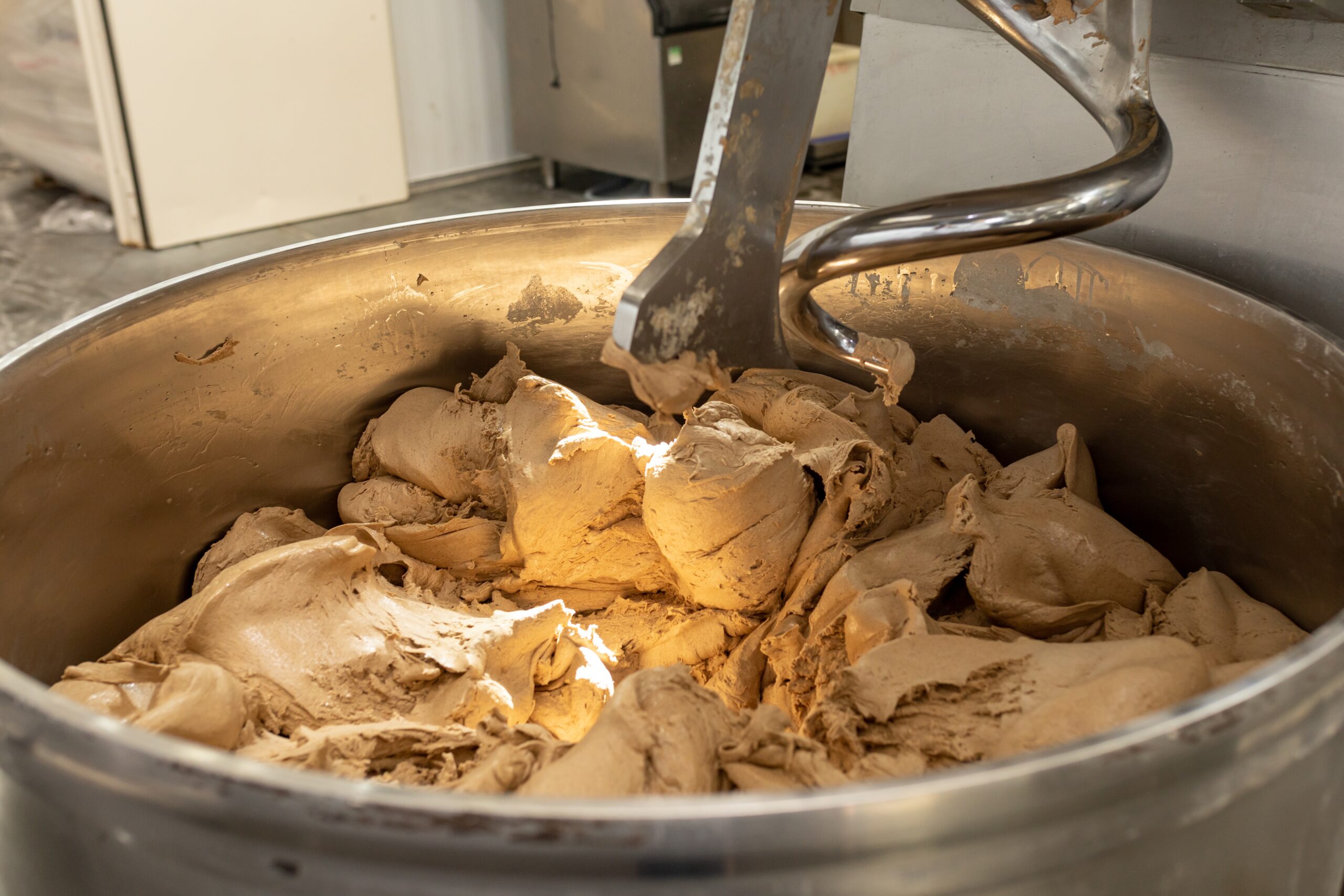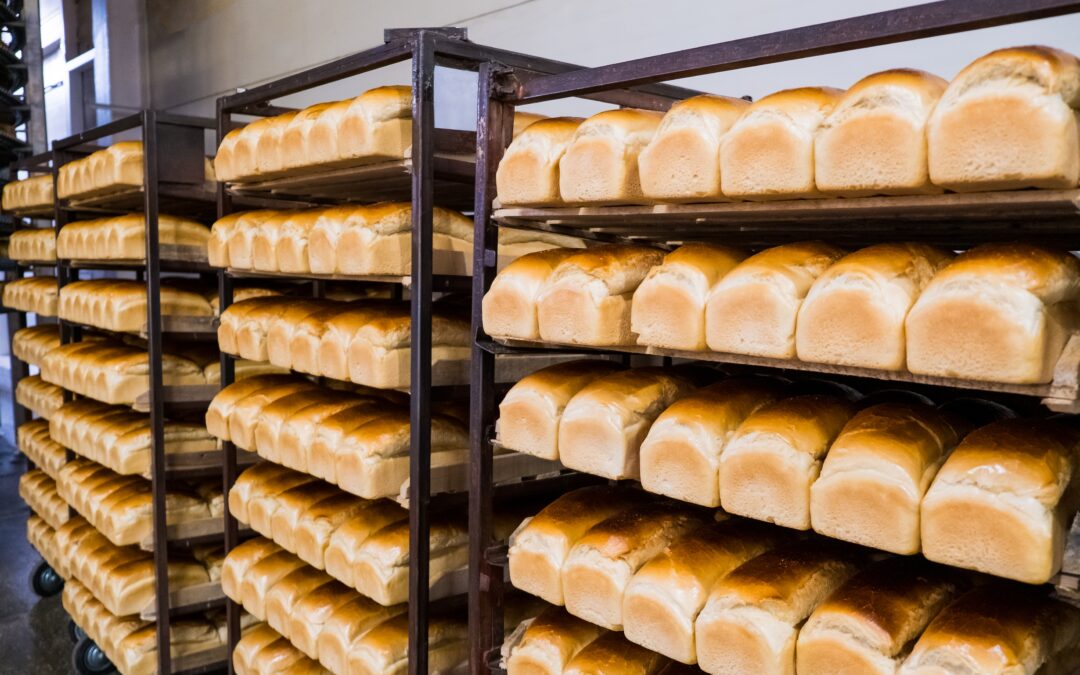How a loaf of bread looks and feels is a big factor for consumers. A large loaf isn’t only more enticing; it’s also a visual indicator of good volume.
But what exactly is loaf volume, and why is it so important in the baking industry?
Bread loaf volume is generally referred to as the cubic centimeter measurement of a loaf of bread at a specific dough weight. It is primarily influenced by the gas production and retention of the bread during baking.
Yeast fermentation produces gas during the proofing process, causing the dough to rise. How much it rises and how much of the rise remains after baking determines the bread’s quality and loaf volume.
Knowing how to properly increase loaf volume can greatly improve the quality of your bread-baking results, making for a more visibly appealing outcome and delivering the desired mouthfeel.
Bakers can use several methods to increase loaf volume, including changing flour compositions, using more or less water, more or less yeast, adjusting formulation by adding sugars, enzymes, and even using different grains.
In this article, we’ll explain why loaf volume is important in bread production, what affects it, how flour composition and dough tolerance factor into it, and what you can do to improve it.
Why loaf volume is important in bread production
Obtaining the right loaf volume from dough is something all bakers are concerned with, but location and culture affect the customers expectation when purchasing bread.
In certain countries, customers instinctively reach for the largest loaf on the shelf because they feel they’re getting more for their money. The consumer often correlates loaf volume with “more bread”, because the loaves appear bigger.
Plus, the better the loaf of bread looks, the more enticing it’ll be for customers. Visual attributes like bread crumb texture and crumb structure are impacted by loaf volume and the approach taken to achieve it.
This is important for bakers to keep in mind for bread production, because increased loaf volume is a key component to meeting customers’ expectations.
This means bread volume can be just as important to bakers as its quality and flavor.
However, expert bakers know that when the same sized dough piece is used in bread production, more volume does not technically equal more bread.
You don’t necessarily have to increase the amount of dough used in the baking process to produce larger loaves of bread or baked goods. Loaf volume can be created with the same amount of dough by using enzymes and other techniques.

What factors impact loaf volume
Quite a bit goes into the food science of achieving the highest loaf volume, from flour composition to the quality of the wheat processed to make the dough.
Here, we’ll dig deeper into these factors of the bread-baking process to better understand what impacts loaf volume directly.
Wheat protein quality
One of the most important factors in loaf volume is the quality of the proteins within the flour itself.
When wheat flour mixes with water, gluten forms to create a web like structure. This structure, often referred to as a “gluten network” becomes the support for gas retention in the dough as fermentation occurs.
Gas is created during the fermentation process (known as “proofing”), causing the dough to expand. The finished product can suffer from a couple of problems if the protein that helps form the gluten network is not of optimal quality.
● If the proteins are inelastic (i.e., too strong or tight), they restrict the amount of expansion caused by the gasses released during fermentation. This results in denser bread that won’t rise to the optimal level.
● If the proteins are too elastic, the dough will expand more during fermentation but will not be able to support the over expansion. This results in bread falling or flattening.
Protein quality is determined by the quality of wheat used in the milling process, which directly impacts the quality and composition of the flour used during the baking process.
Flour Quality
Flour quality and type are other key factors determining loaf volume and play a vital role in the bread-making process. As discussed previously, flour quality is typically determined by its protein content and gluten quality.
Several factors can impact flour quality and ultimately determine bread quality, including enviornmental conditions during the growing season, rain on the ready to harvest crop, type of wheat used in the milling process, flour maturation after milling, and the miller’s understanding of how to correct for deficiencies.
Environmental factors tend to have one of the largest impacts on the harvest and storage of wheat, ultimately affecting flour quality.
For example, flour stored in a humid location will mold due to absorbing moisture from the air. This is why storing flour in a dry, cool place is important. Drought can affect the quality of wheat available, creating challenges in the milling process and altering the quality of the flour produced. Wheat that is rained on right before harvest can create a sprouting condition that adversely affects quality due to pre-spout enzyme product in the wheat kernel itself.
While flour maturation can positively affect a flour’s baking performance, proper hydration, proper mixing time, and the good control of the proofing process also play a vital role in the bread’s loaf volume.
There are molecular factors of flour composition that also directly affect flour quality, — such as the ratio of gliadins & glutenins, the amount arabinoxylans, polar lipids and even the amount of damaged starch resulting from the milling process.
Each component makes up a portion of flour, and each has its own impact on optimum flour performance.
● Gliadins and glutenins. These gluten proteins in wheat flour help determine the dough’s elasticity and extensibility.
● Damaged starch. Damaged starch provides yeast with a substrate for the fermentation process.
● Arabinoxylans. These can absorb up to 10 times more water and prevent gliadins and glutenins from producing more protein linkages that can reduce volume.
● Polar lipids. These make up a small portion of all flour (generally around 1%) and directly impact dough viscosity.
Different types of flour have different characteristics that affect the flour performance and bread quality. For example, a bread made from white flour has different attributes than bread made from whole wheat flour because whole wheat flour has more arabinoxylans and fiber (cellulose material) than white flour.
Whole-wheat flour does not typically support a large loaf volume due to the non-flour components (bran and germ included in the flour.) White flour, which contains the functional protein, excludes the bran and germ, making it better suited to capture the gas and produce high volume bread.
Can you create loaf volume in gluten-free bread products?
As gluten-free bread type products are sought, bread production methods and ingredients must be changed to compensate for the lack of wheat flour. “Bread dough” produced with gluten-free ingredients, requires alternate gas holding compounds such as xanthan and guar gums. It will likely deliver a lower level of volume and texture dissimilar to bread made from flour of wheat origins.
While the above points determine flour composition and flour dough quality, each point plays a different role in impacting loaf volume. With this information in mind, achieving an improved loaf volume is much easier.
Dough tolerance
Dough tolerance is often described by its rheological properties. Giving quantifiable numbers to how resilient a dough is can help to determine when over mixing may occur, how much water a flour is able to hold, a dough’s ability to hold gas, and to some degree how resilient it might be under variable fermentation conditions.
Dough strength and bread volume often go hand in hand, several tests are used to describe dough tolerance rheologically.
● Farinograph
○ Absorption – This is the amount of water as a percentage that is required to center the curve on the 500 BU line given a fixed amount of mixing energy. This helps determine how much water to add to a flour to achieve optimal hydration.
○ Stability – This is the amount of time a properly hydrated dough stays above the 500 BU line when given a fixed amount of mixing energy. This helps to determine the amount of mixing in minutes a dough can withstand when properly hydrated.
○ MTI (Mixing Tolerance Index) This refers to the magnitude of deflection in the farinograph curve of a properly hydrated dough, stable dough. It attempts to measure a given dough’s resistance to mixing giving an indirect measure of the quality and quantity of the inherent proteins that make up the gluten.
● Alveograph.
○ P Value The value that numerically describes the resistance to stretch of a properly hydrated, properly mixed dough. This is acquired by the pressure needed to create a bubble from a known amount of dough at a given thickness. This measurement attempts to mimic the work of the yeast when producing gas during fermentation.
○ L Value The value that numerically describes how far a dough will stretch. This value is acquired by continuing to push air into the dough bubble until it ruptures.
○ P/L Value The ratio of the P value / L value. This numerical ratio is helpful when describing a flour in relation to other flours from other wheat classes or origins. The greater the measured P/L ratio (1.8-or above) indicates a dough that is “in-elastic” while a P/L ratio measured below 0.8 indicates a dough that leans towards high elasticity.
○ W Value The value that quantifies the overall effectives of a flour of being able to hold gas and expand in fermentation. It is acquired by combining the above values by calculating the area under the alveograph curve.
There are correlations between loaf volume and dough development.
For example, a dough system with sufficient CO2 production and a gluten network capable of holding gas will produce a loaf of bread with increased volume and improved crumb texture.
How to improve loaf volume
While bakers can choose from a number of methods to improve loaf volume during the bread-making process, the primary method involves enhancing the proteins within the dough itself prior to baking.
The quality of the proteins plays one of the biggest parts in determining the volume of baked goods. As previously mentioned, proteins that are either too weak or too strong can result in poor quality and loaf volume.
If the dough is falling during the baking process, bakers can use enzyme improvers like transglutaminase or glucosidase to strengthen the gluten network.
This helps the dough retain more gas during the fermentation process, increasing the overall loaf volume.
When the dough is too dense or isn’t rising, bakers can add xylanases — enzymes that can help relax the overall structure of the gluten network — without damaging the protein, giving the dough more elasticity.
This can increase the amount of gas retained during the fermentation process to increase loaf volume.
Another simple way to improve loaf volume is by using amylases.
These enzymes convert the complex carbohydrates (starches) within the flour into sugar, which the yeast consumes to produce gasses during the fermentation process.
Adding sugar to the dough provides similar results to this method and can increase loaf volume without using enzymes.
Discover how VolMAX Flour Technologies can improve your loaf volume
Improving loaf volume is just part of increasing the quality of your baked goods.
By understanding and addressing the key pain points (e.g., the higher cost of raw materials, low extensibility, or low-protein wheat), volMax offers millers a way to raise their flours’ baking quality.
With additive blends that increase how your flour performs, volMAX works by improving water absorption and properly feeding the yeast, and enhancing a loaf’s volume and crumb strucure.
See how volMAX from Engrain can help you maximize your flour’s performance providing better results and a higher-quality product — all while saving you money in the long run.
